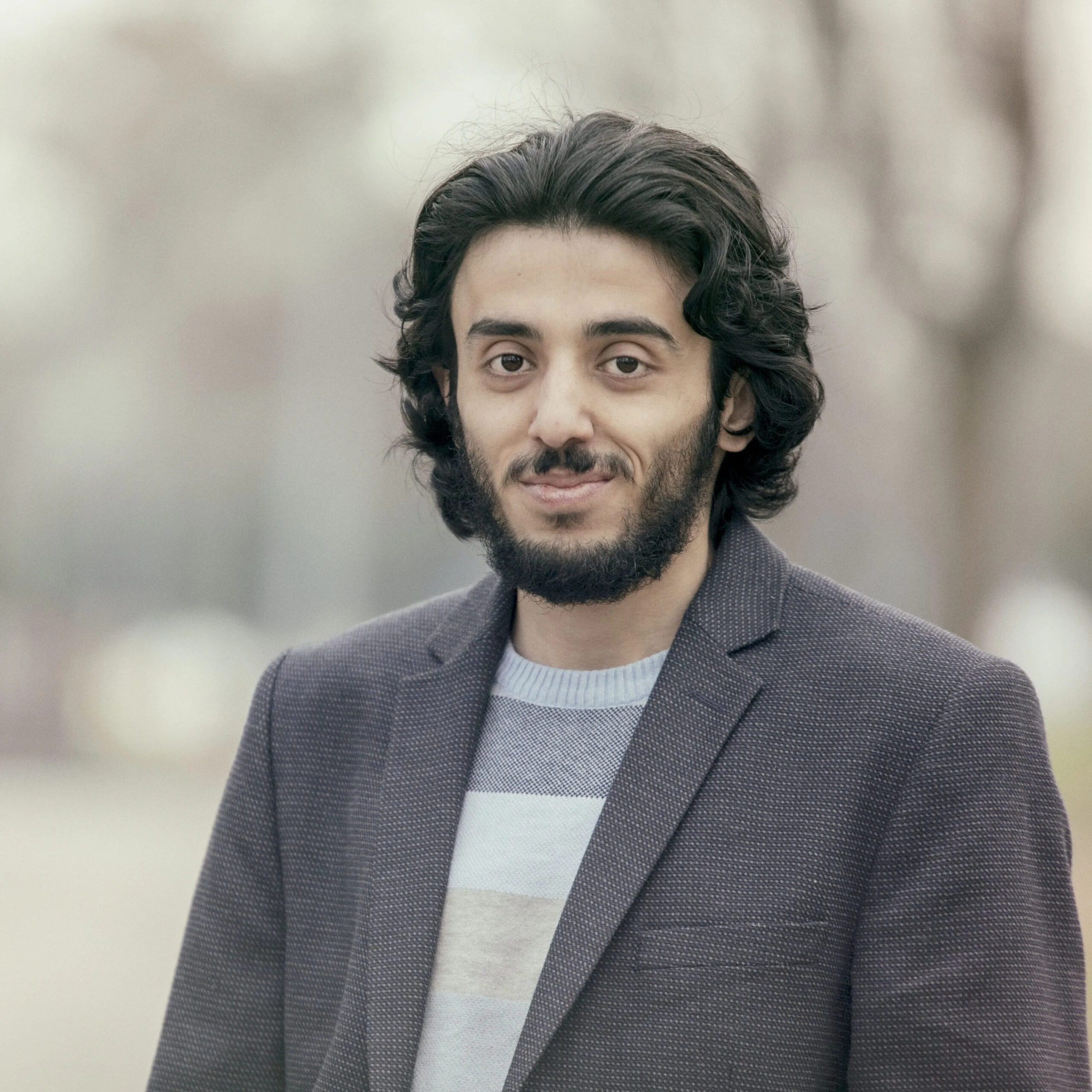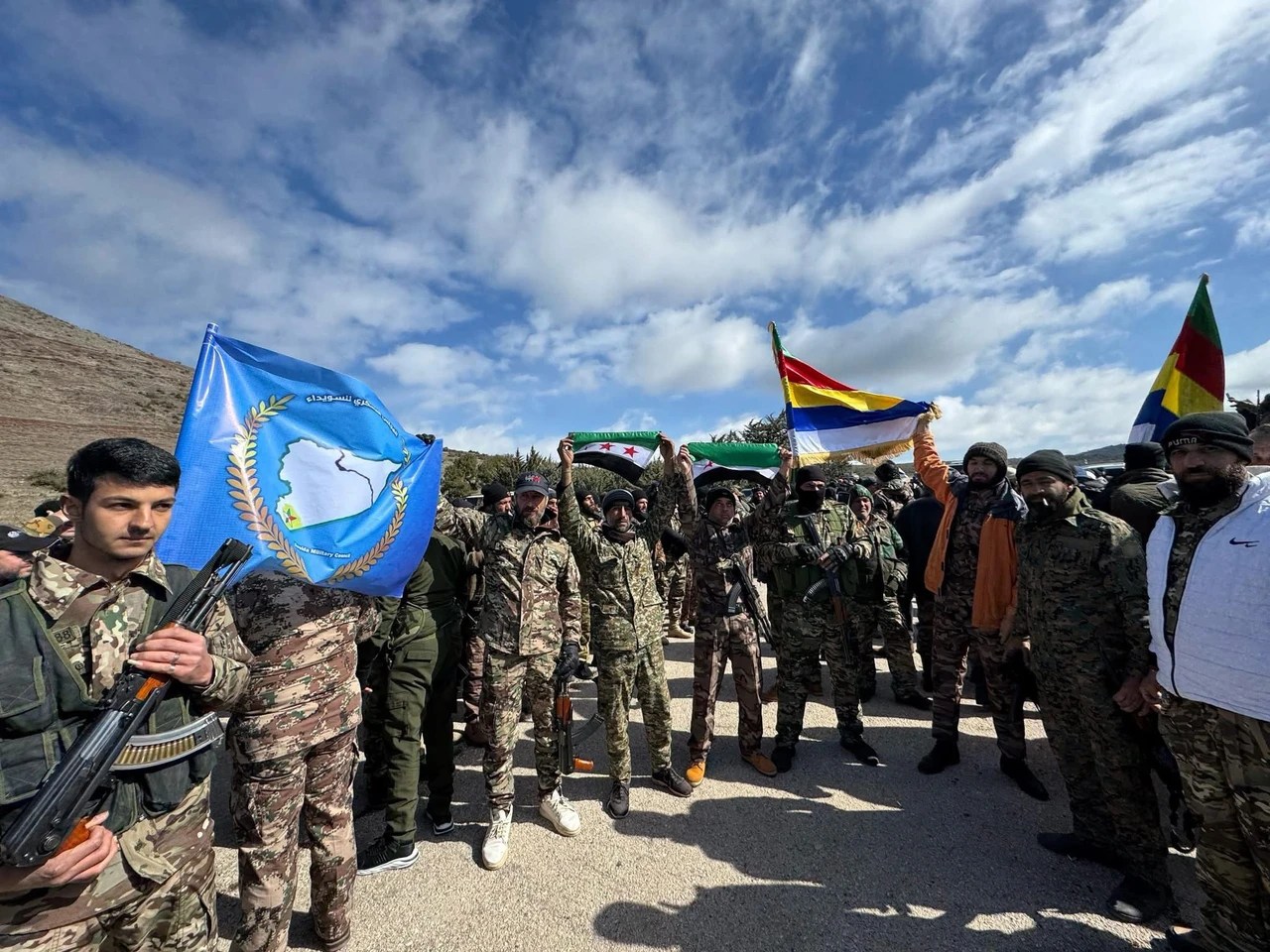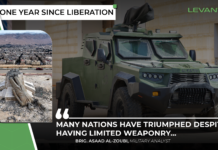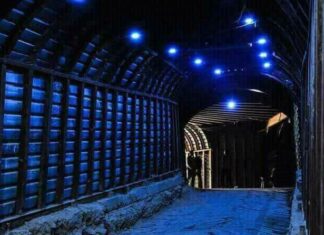By: Obayda Amer Ghadban

In the first of a two-part analysis, Obayda Amer Ghadban —a PhD student in War Studies at King’s College London—examines Israel’s swift and aggressive moves into Syria following the fall of Bashar al-Assad in December 2024. Drawing from military reports, regional policy documents, and academic analysis, this article outlines Israel’s evolving objectives, its buffer zone strategy, and the broader security doctrine that now defines its presence in Syria’s south.
______________________________
Just two days after Bashar al-Assad’s regime collapsed, Israeli jets roared over the Syrian border, launching precision strikes that turned old regime bunkers into fireballs. In the ensuing power vacuum, Israel expanded its operations deep into Syria’s south—no longer reacting to instability, but actively shaping it.
Hundreds of air and missile strikes hit Syrian military sites—bases, airfields, aircraft, and weapons stockpiles—destroying what was left of the regime’s arsenal. Israeli ground forces moved into southern Syria, seizing the former UN-monitored buffer zone and several towns in Quneitra. The old truce was void, Israel argued, with no regime left to uphold it.
By late March 2025, Israel had carried out at least 70 ground incursions and over 30 airstrike campaigns, expanding operations from the Damascus region down to Daraa. Army patrols now move through villages just beyond the frontier.

In Koya village, Israeli troops exchanged fire with local gunmen defending their homes. The army responded with shelling and airstrikes, killing at least seven civilians—a deadly incident that sparked international outrage.
Officials frame these moves as security measures. “The goal is to ensure southern Syria doesn’t become another southern Lebanon,” said Defense Minister Yisrael Katz. Prime Minister Netanyahu echoed that framing, describing the military presence as a defensive shield.
But the aggression has fueled armed resistance and drawn condemnation. Syria’s new government, led by President Ahmad al-Sharaa, has demanded full Israeli withdrawal, insisting it will respect the 1974 disengagement lines. Yet Israel shows no sign of pulling back. What began as preemptive action is evolving into a long-term security belt inside Syria—militarized, fortified, and open-ended.
Strategic Vision: Keep Syria Weak, Divided
With Assad gone, Israel faces a strategic crossroads. Its national security doctrine outlines three scenarios for Syria’s future: stabilization under a moderate, Western-aligned central government; radicalization under an Islamist axis (e.g., Muslim Brotherhood, Turkey, Qatar) or fragmentation into a weak confederation of semi-autonomous regions. Israel favors the first and third outcomes and is already pursuing measures to shape Syria’s post-war order accordingly.
According to the Doha Institute for Research and Policy Studies, core aims include; crippling Syria’s military to prevent any strong national army from forming, securing parts of the south to establish a buffer zone beyond the Golan Heights, encouraging fragmentation along sectarian and ethnic lines to keep Damascus weak, positioning Israel as “protector of minorities” like Druze, Christians, and Kurds and blocking the rise of a “hostile” or independent Syrian state.
Israel’s strikes on military infrastructure aim to leave Syria dependent on foreign backers and incapable of challenging Israel. The decision to seize the buffer zone came the day Assad fell, resulting in a military-controlled belt that stretches deep into Syrian territory.
Some Israeli analysts openly support a fragmented Syria, divided into Alawite, Sunni, Kurdish, and Druze enclaves. A fractured country, they argue, would be too internally consumed to pose a threat.
Reviving its “alliance of minorities” doctrine, Israel claims to act as a defender of vulnerable groups. Officials highlight protection of the Druze in particular, using humanitarian language to justify intervention and win local allies. While global powers discuss rebuilding Syria, Israel’s priority remains security dominance—even if that comes at the cost of unity or sovereignty.
Tools and Tactics: Firepower, Minorities, and Proxies
Israel’s approach mixes brute force and soft power. Its air campaign has been unprecedented in scale, targeting arms depots near Damascus, convoys in the eastern desert, and even Syria’s small navy. The IDF’s ongoing campaign includes air power, ground incursions, and special operations.

Protecting Minorities: A Manufactured Intervention
Another critical tool is Israel’s extensive intelligence network and local alliances. Notably, Israel has reached out to the Druze community of southern Syria. The Druze, concentrated in Suwayda province and parts of the Golan region, are a minority that Israel views as a potential ally against Sunni extremist groups.
In early 2025, Israeli leaders vowed to protect them. When clashes erupted between government forces and a pro-Assad Druze militia in Jaramana, Israel threatened to intervene. Later, a new militia—the Suwayda Military Council (SMC)—emerged, reportedly coordinated with Israel and armed from abandoned regime stockpiles. This relationship reflects Israel’s broader strategy: foster sectarianism and use minority alliances to build influence and justify military involvement.
Israel has also shown quiet support for Kurdish forces in Syria’s northeast, viewed as a bulwark against Islamist rebels and Turkish influence. Historical ties with Kurdish movements now inform potential cooperation with the Kurdish-led autonomous administration. One analysis framed this clearly: Israel is “advancing its interests under the guise of protecting minority groups.”
Influence by Proxy and Pressure
Covert operations, intelligence, and diplomacy round out Israel’s tools. Mossad is likely active in Syria, targeting militants, Iranian operatives, or local leaders. Meanwhile, Israel has reportedly lobbied Washington to withhold aid from Damascus and maintain sanctions.
By pushing the US and Europe to withhold recognition or aid from the government, Israel hopes to keep Damascus weak and internationally isolated. Refusing to engage directly with Syria’s new government, Israel relies on US coordination and backchannel talks with Russia.
There are also emerging reports of Israel coordinating with certain tribal or local leaders in eastern Syria to prevent pro-Iran militias from re-entering—another layer of the intelligence and local proxy strategy.

The very tools Israel wields to assert control carry inherent risks and limitations. Beneath the tactical victories and territorial gains, Israel’s expanding campaign is stirring a volatile mix of resentment, resistance, and international alarm, raising the question of whether this strategy secures Israel and its goals or sets the stage for future chaos.
In Part Two, this series will examine the risks now surfacing from Israel’s expanding presence in Syria—from rising civilian resistance to growing tensions with Turkey and international powers. As Israel digs in, the question becomes not just what it hopes to prevent, but what it might be provoking.








